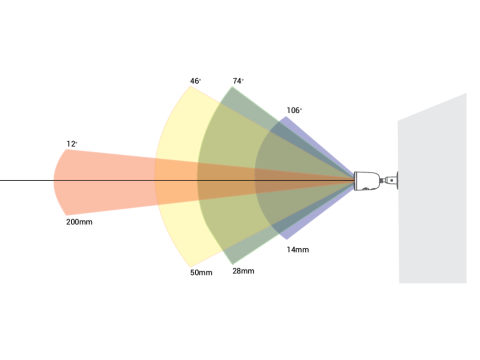Focal Length Calculator for Surveillance Cameras
Optimize Your Camera’s Field of View and Detection Capabilities
Accurately calculating the focal length is essential for achieving desired surveillance outcomes, whether you're identifying a face, reading license plates, or detecting motion. Our calculator simplifies this process, ensuring your security setup meets specific operational goals.
Inputs for Calculation
To calculate the required focal length, the following parameters are necessary:
- Matrix Format (e.g., 1/3"): Determines the sensor size.
- Aspect Ratio (4:3 or 16:9): Defines the image dimensions.
- Task Type: Choose from tasks like identifying faces, reading license plates, or general motion detection.
- Object Distance (meters): The distance between the camera and the observed object.
Results:
- Required Focal Length: 0 mm
- Horizontal Field of View: 0°
- Width of Detection Zone: 0 meters
These results guide you in selecting the appropriate lens for your surveillance camera.
How to Use the Calculator
- Enter Key Parameters: Input the sensor format, aspect ratio, and task requirements.
- Specify Observation Distance: Define the distance to the monitored area for accurate results.
- Review Recommendations: Use the calculated focal length to select compatible lenses.
Understanding Focal Length and Its Impact
The focal length directly influences the field of view, which determines the area the camera can monitor and the level of detail it captures:
- Shorter Focal Length: Wider field of view, less detail. Ideal for general surveillance.
- Longer Focal Length: Narrower field of view, higher detail. Suitable for identification tasks.
Applications by Task
- Identify Unknown Individuals: Requires detailed resolution to capture facial features.
- Read Vehicle License Plates: Demands precise focus for clarity at longer distances.
- Recognize Familiar Faces: Balances field of view and detail.
- Detect Human Presence: Focuses on broader coverage with lower resolution needs.
Tips for Practical Use
- Adjust for Standard Lenses: If the calculated focal length isn’t standard, select the closest available size.
- Account for Aspect Ratio: Use the correct aspect ratio (4:3 or 16:9) to ensure accurate zone dimensions.
- Optimize Placement: Use additional tools like field-of-view calculators for comprehensive planning.
Ready to refine your surveillance setup? Use our focal length calculator to ensure precision in your security planning. For advanced needs, explore related tools for field-of-view and storage calculations.

